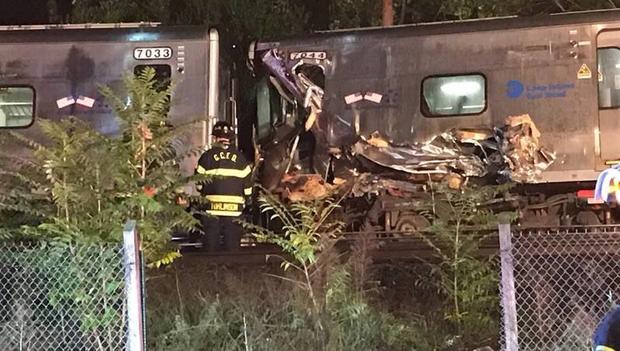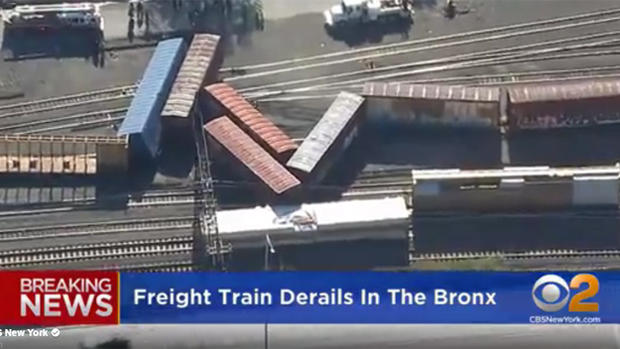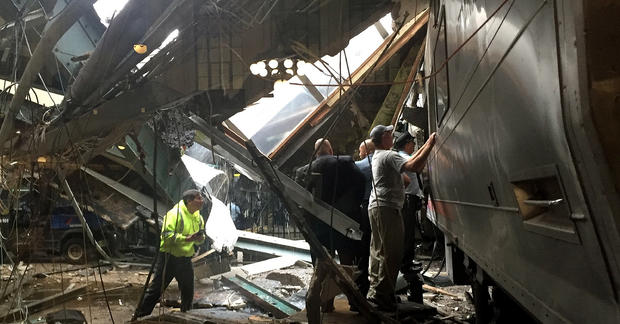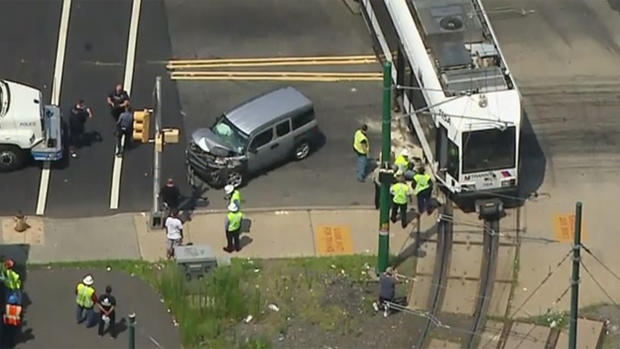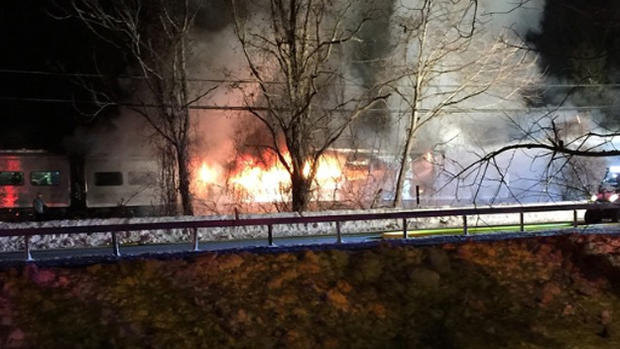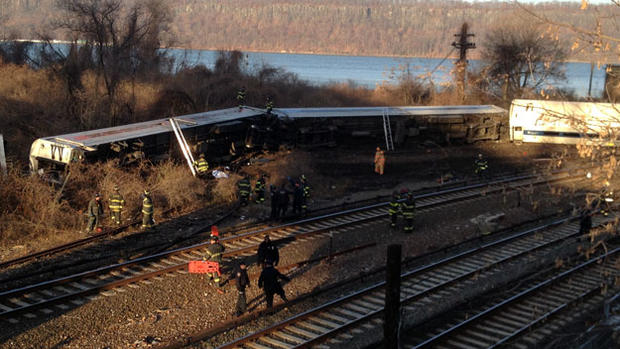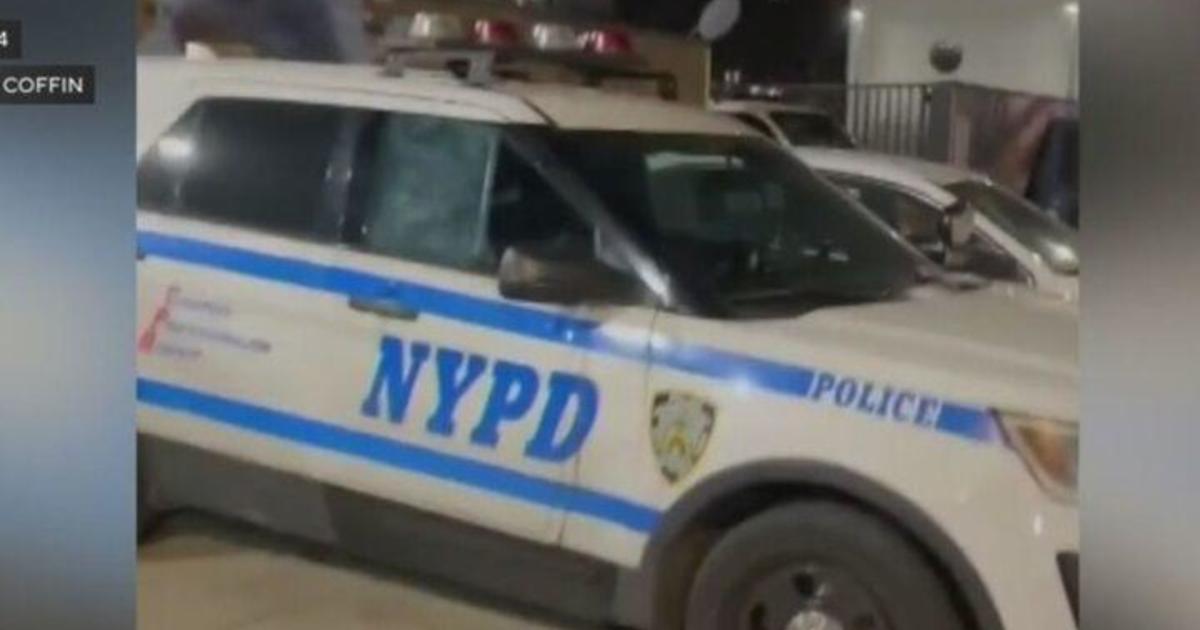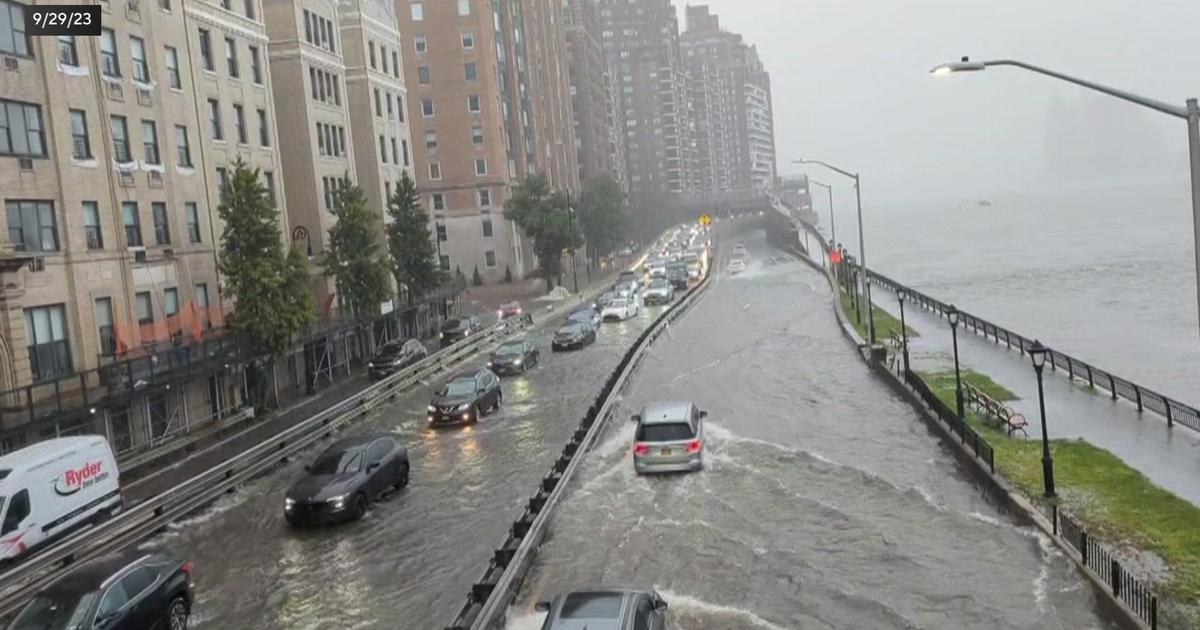Recent Train Derailments, Crashes Near New York City
NEW YORK (CBSNewYork) -- Dozens of people were hurt Wednesday morning when a Long Island Rail Road train crashed at Atlantic Avenue Terminal in Brooklyn – in the latest major derailment in the area in recent months.
The FDNY said at least 103 people suffered non-life threatening injuries in the derailment, which happened on track 6.
PHOTOS: LIRR Train Derailment In Brooklyn | 5 Deadliest Train Crashes In The Tri-State
CBS2's Alice Gainer had a roundup of several other train derailments in New York and New Jersey over the last few months.
Oct. 8, 2016: A passenger train collided with an LIRR work train, causing the Huntington-bound train to derail a half mile east of the New Hyde Park station. Officials said 29 people were injured.
Oct. 5, 2016: A CSX freight train derailed in the Bronx, disrupting Amtrak service.
The derailment took place around 9:15 a.m. in the Oak Point rail yard near Bruckner Boulevard and Longwood Avenue in Hunts Point, CSX said in a statement.
Eight freight cars derailed. Seven were empty, and one contained lumber, CSX said.
No injuries were reported.
September 29, 2016: A NJ TRANSIT train slammed into the bumper going twice the speed limit, barreling through the Lackawanna station in Hoboken, sending debris flying.
Videos From The Crash | Full Coverage
Fabiola Bittar de Kroon, 34, was killed in the Sept. 29 crash and 100 people were injured. THE NTSB later determined that the train was traveling 8 mph while it heading towards the station, but sped up to 21 mph — more than twice the 10 mph speed limit — before hitting the bumper and slamming into the station.
The conductor, 48-year-old Thomas Gallagher, said he didn't remember the crash. About a month later, his attorney said Gallagher suffered from severe sleep apnea that had not been diagnosed at the time of the crash.
July 28, 2016: A sport-utility vehicle and light rail train crashed in Newark at Franklin Avenue and Franklin Street.
One person aboard the train was injured.
April 3, 2016: An Amtrak train derailed after striking a piece of construction equipment in Chester, Pennsylvania south of Philadelphia – killing two workers. Palmetto train No. 89 had been headed from Penn Station to Savannah, Georgia when it struck a backhoe on the tracks.
There were approximately 341 passengers and seven crew members on the train, officials said. Both of the workers who were killed were Amtrak employees and were part of the crew operating the backhoe, officials said.
The victims were identified as Peter John Adamovich, 59, of Lincoln University, Pennsylvania, and Joseph Carter Jr. 61, of Wilmington, Delaware.
May 12, 2015: Eight people were killed, and more than 200 were injured, when a speeding Amtrak Northeast Regional train traveling from Washington, D.C. to New York City derailed in Philadelphia.
A U.S. Naval Academy midshipman, a college dean and several businesspeople -- including Jim Gaines, an Associated Press video software architect -- were among those killed in the mangled front cars. Award-winning chef Eli Kulp was left paralyzed and unable to use his hands.
Federal investigators concluded the engineer was distracted by word that a nearby SEPTA train had been hit by a rock. They say engineer Brandon Bostian didn't realize where he was and accelerated full-throttle to 106 mph instead of slowing down for the curve's 50 mph speed limit.
Feb. 3, 2015: Six people were killed when a Metro-North train at a crossing near Valhalla in Westchester County.
The Harlem line train collided with Ellen Brody's Mercedes Benz SUV, which was sitting on the tracks in the Commerce Street grade crossing, killing Brody and five passengers in the lead train car.
Dec. 1, 2013: Four people were killed and 70 were injured after a Metro-North train derailed near the Spuyten Duyvil station on the Hudson Line.
The crash occurred in as the train went around a curve at about 82 mph. The speed limit on the turn was 30 mph.
The final report said engineer William Rockefeller fell asleep at the controls.
May 17, 2013: More than 60 people were injured, five critically, after a Metro-North train derailed and then was struck by another train in Fairfield, Connecticut. The NTSB ruled the probable cause a broken track.
Carl Berkowitz, Ph.D. is a transportation security expert. He weighed in on the spate of accidents.
"The way to eliminate accidents, the bottom line is more and more training, and keeping people on their toes," Berkowitz said.
Berkowitz said while not all derailments are caused by human error, many are.
"To overcome that, and especially in jobs which are constantly repetitive and to make them interesting, you need to get people back and enthusiastic about their job -- simulation training, for example, and other kinds of training are very helpful."
As a result of the Spuyten Duyvil Metro-North derailment, the NTSB recommended a sleep apnea screening program for engineers. It began with Metro-North and was expanded to conductors, and also to train crew members also on the LIRR.
After the Hoboken accident, NJ TRANSIT announced it was refining its screening process. The Federal Railroad Administration announced plans for nationwide testing.
As for the cause of the derailment at the Atlantic Terminal Wednesday, it remains under investigation.
